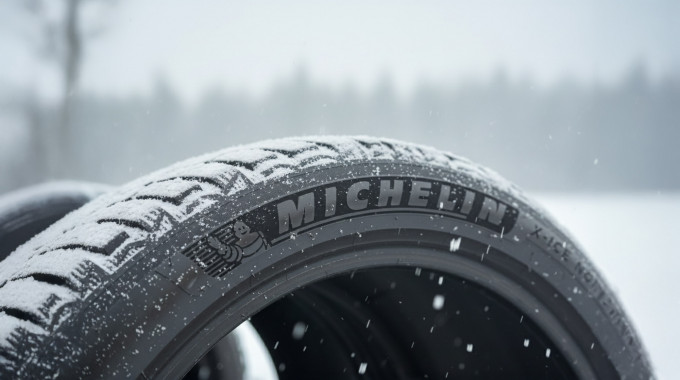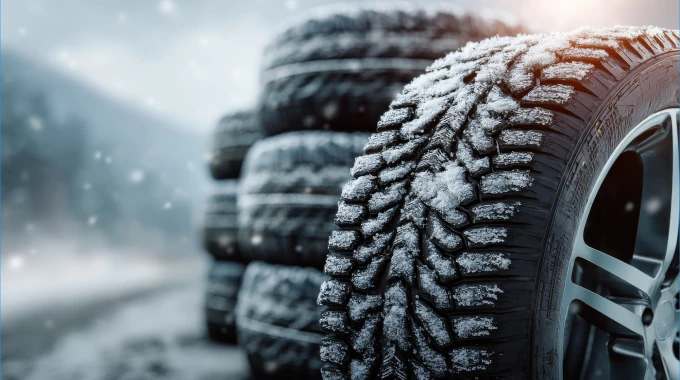
Car Safety Features [Part 1]: Stopping Abilities
Being in control when your vehicle is stopping is essential for safety. However, a lot can hinder it, such as wet or icy conditions, the road surface, or even how hard you’re pressing the brakes.
Automakers have engineered a number of driver-assist technologies to help when you need to stop. Here’s what they are and how they work.
Keep in mind that no matter what vehicle you drive, or how many technologies it has, its single most important safety item is good tires. None of these technologies can perform to their highest level if the tires have worn tread or they’re not inflated properly. Check them regularly, and seasonably switch over to winter tires. Even if you don’t get a lot of snow, winter tires provide better handling and stop sooner on cold pavement.
Anti-Lock Brakes (ABS)
Usually shortened to ABS, this system has been a federal requirement on all new vehicles sold in Canada since model-year 2012.
ABS helps keep your brakes from locking up in a panic stop if the road is wet or slippery, or you’re on a loose surface such as gravel. Without ABS, the brakes will stop the wheels from turning, but the tires can continue to slide like a toboggan. Even if you try to steer, you’ll probably still keep sliding out of control.
With ABS, a speed sensor monitors each wheel. When the system detects the wheels are locked up and sliding, it rapidly pumps the brakes on and off, much faster than any driver could do it with the brake pedal. This helps the tires get a grip on the pavement. It also lets the driver steer the vehicle to help get it under control. Here's a quick video explaining how ABS technology works:
The system doesn’t come on every time you use the brakes, only when it’s required in a panic stop. It doesn’t necessarily stop you any sooner, and in some situations it may take longer to stop, especially on gravel. If your ABS activates, you may be driving too fast for the conditions and should slow down.
When the ABS comes on, you’ll feel the brake pedal vibrate, and you’ll usually hear a groaning noise. You may also get a warning light in the instrument cluster telling you it’s on. Don’t take your foot off the brake pedal, and keep pushing it hard until your vehicle comes to a stop.
Electronic Stability Control (ESC)
This is known as ESC, but some automakers may use their own names for it, such as StabiliTrak or Vehicle Dynamic Control. Like anti-lock brakes, ESC is a mandatory requirement on all new passenger vehicles sold in Canada. It’s meant to help you keep your vehicle in control if it starts to skid.
ESC uses the same wheel speed sensors as the anti-lock braking system, plus sensors that measure how much you’ve turned the steering wheel, and if the car is moving in that direction. If it isn’t and it’s skidding, the system applies the brakes to specific wheels, which helps straighten out the vehicle. The system may also momentarily reduce the engine’s power to help maintain control.

Electronic Stability Control (ESC) | Photo: Hyundai
Traction Control (TCS)
The ABS sensors are also used for the traction control system, or TCS. The system detects if you’re trying to accelerate and one wheel is spinning, such as if it’s on ice. It brakes the spinning wheel, providing more power to the tire that has grip, which should get you out of trouble.
However, there are times that you may want the wheel to spin, such as when you’re stuck in deep snow. For that, there’s a button or icon that lets you temporarily shut the traction control off. Don’t overdo the spinning – too much could potentially damage your vehicle, and call a tow truck if necessary – and turn the traction control back on once you’re out.
Brake Assist
Many drivers don’t push the brake pedal hard enough in a panic stop, and that little bit of extra force could make all the difference. If the brake assist sensors detect a hard pedal push that doesn’t go all the way down, it applies more force for maximum braking. It doesn’t activate the brakes itself, but just brakes harder when you do.
Some vehicles include an even higher-tech version. Whenever you push the brake pedal on any vehicle, it pressurizes hydraulic fluid in the system that activates the brakes. This version of brake assist reacts when the emergency front collision warning system detects that you’re coming up quickly behind another vehicle, and starts to pressurize the fluid. When you do hit the brakes, they will react that much faster. If you don’t, the emergency front braking system will kick in and try to get you stopped.
Tire Pressure Monitoring System (TPMS)
Remember the importance of properly-inflated tires? TPMS is used to monitor them. It isn’t a federal requirement on new vehicles in Canada, but since it is mandatory in the U.S., it’s usually included on vehicles sold here.
TPMS warns you if a tire falls below a certain percentage of inflation. Some illuminate a general warning light if one is low, while more sophisticated systems have a continuous readout of each tire’s pressure.
Direct TPMS uses a sensor inside each tire to measure the pressure, while indirect TPMS uses information from the speed sensors used for ABS, to detect a slower-turning tire that may be low on air. With either system, you should still use a gauge to measure your tire pressure once a month. Improperly-inflated tires aren’t safe, and they also waste fuel, so be sure they’re right.
More content about







